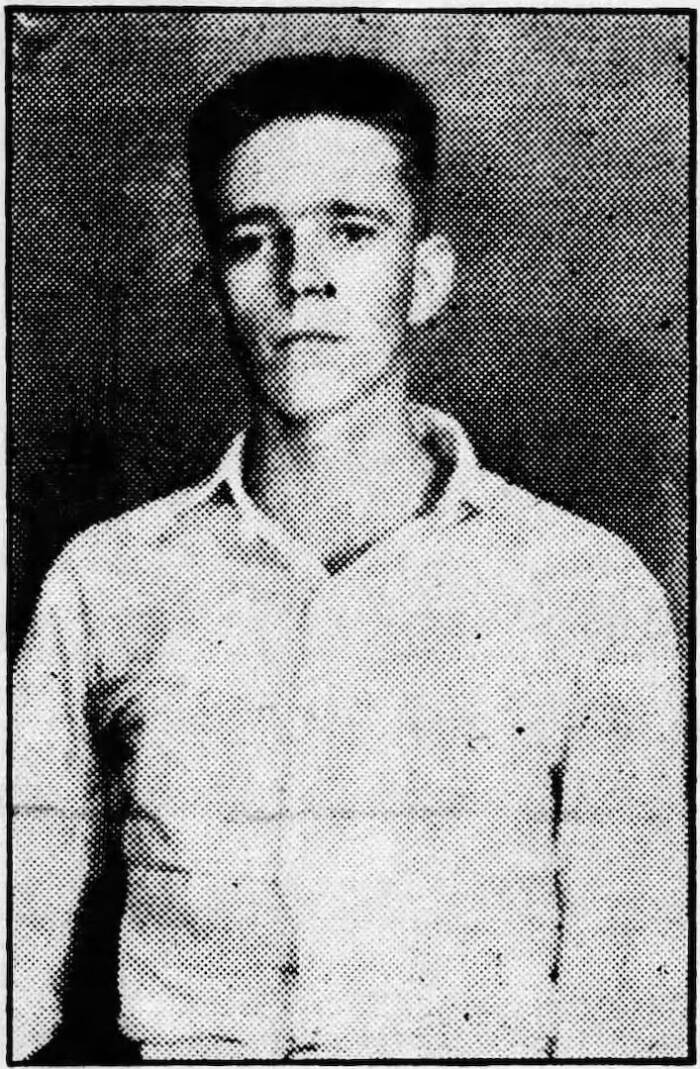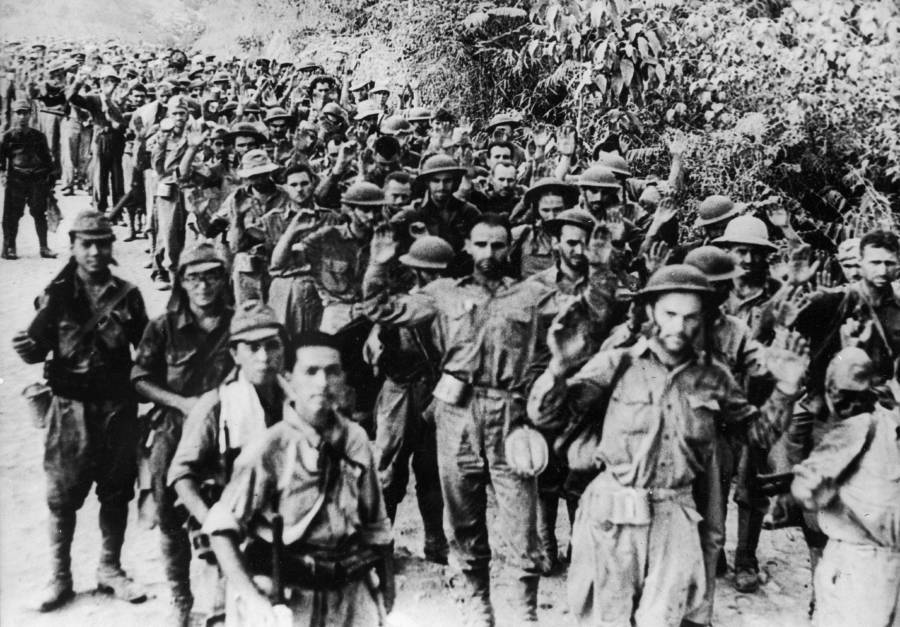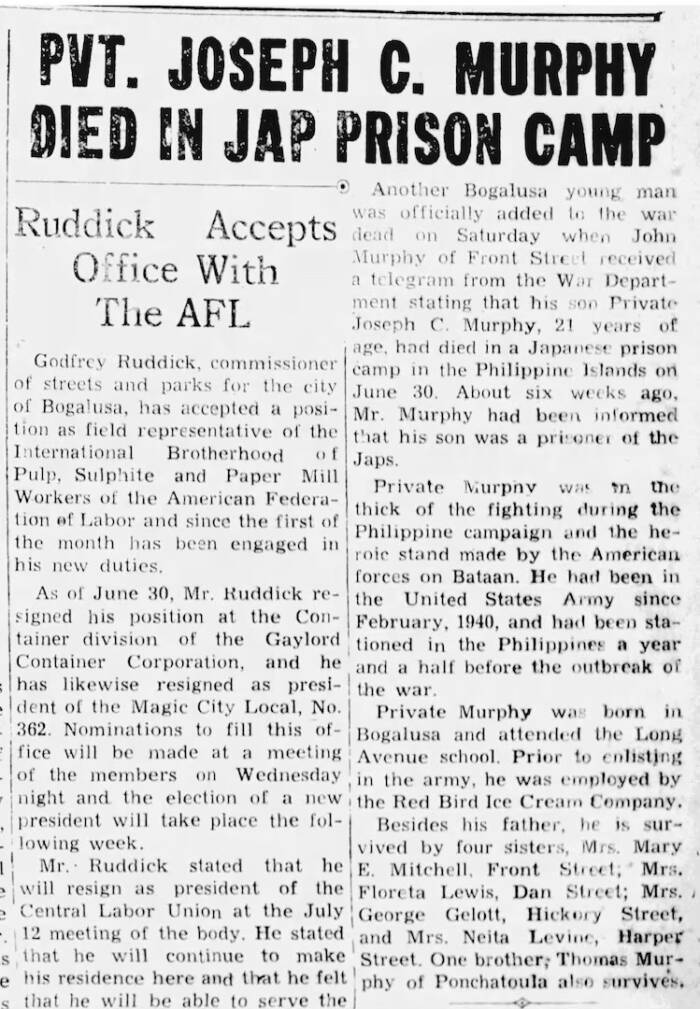Just months after the Bataan Death March, Joseph C. Murphy died in a horrific prisoner of war camp — and was buried among countless other deceased soldiers.

Defense POW/MIA Accounting AgencyJoseph C. Murphy, the U.S. prisoner of war whose remains were just recently identified.
On April 1, 2024, scientists working with the Defense POW/MIA Accounting Agency positively identified remains of a World War II soldier who died in a prisoner of war camp in the Philippines back in October 1942. The remains belonged to 20-year-old Joseph C. Murphy.
Murphy was from Bogalusa, Louisiana and eventually became a private first class in the U.S. Army. He was serving in the 31st Infantry Regiment in the Philippines when American forces surrendered to Japanese troops in the Bataan Peninsula.
After being forced to participate in the horrific Bataan Death March, Murphy arrived at the infamous Cabanatuan POW Camp #1 and died only months later of malnutrition and dysentery. For decades, his remains went unidentified.
Now, officials are in the process of sending his remains back home for a proper burial.
Discovering The Remains Of Joseph C. Murphy

The LIFE Picture Collection/Getty ImagesTens of thousands of American and Filipino prisoners were forced to march by their Japanese captors following their surrender at the Battle of Bataan.
In April 2019, researchers working to identify prisoners of war (POWs) from the Japanese Cabanatuan POW Camp #1 in the Philippines exhumed remains that were originally buried in a gravesite marked Common Grave 713.
These remains traveled to the Defense POW/MIA Accounting Agency for laboratory testing. The remains were severely decomposed, and previous attempts at identifying them were unsuccessful.
But thanks to a combination of dental records, mitochondrial DNA analysis, and circumstantial evidence from camp records, scientists were eventually able to identify the remains of Joseph C. Murphy in April 2024.
Murphy was originally from Bogalusa, Louisiana and served as a private first class during World War II. He reportedly worked for an ice cream company before he enlisted in the U.S. Army.
While in the Army, he was part of Company I, 31st Infantry Regiment in the Philippines, and after American and Filipino Allied forces surrendered the Bataan Peninsula to the Japanese on April 9, 1942, Murphy was forced to join the Bataan Death March, a brutal 65-mile trek through the Philippines.
The Ultimate Fate Of Joseph C. Murphy

Defense POW/MIA Accounting AgencyA newspaper article reporting Joseph C. Murphy’s death.
After Joseph C. Murphy completed the excruciating Bataan Death March, he eventually arrived at the notorious Japanese Cabanatuan POW Camp #1 in the Nueva Ecija Province.
The camp lacked proper food and water resources, leading to widespread starvation, malnutrition, and disease. When the camp was liberated in 1945, an estimated 2,800 Americans had died at Cabanatuan. Unfortunately, 20-year-old Joseph C. Murphy was one of the deceased.
On October 28, 1942, Murphy died as a result of malnutrition and dysentery. He was buried in Common Grave 713 at the Cabanatuan Camp Cemetery.
Murphy’s family members were notified of his death and given a letter from U.S. General Douglas MacArthur.
“My deepest sympathy goes to you in the death of your son, Pfc. Joseph C. Murphy, while a prisoner of war of the enemy,” General MacArthur wrote, according to newspaper clips collected by the Defense POW/MIA Accounting Agency.
After the war was over, officials attempted to identify his remains, but since he had been buried with other prisoners and the men’s remains had decomposed over time, it proved difficult to figure out which remains belonged to which men. The recent exhumation — and modern DNA analysis — meant that Murphy could finally be found.
Now, Murphy’s remains are scheduled to arrive back home in Bogalusa, Louisiana, where they will be buried properly on August 3, 2024.
After reading about Joseph C. Murphy, dive into the stories of some of the worst Japanese war crimes. Then, read the true story of Unit 731, Imperial Japan’s human experimentation facility during World War II.





